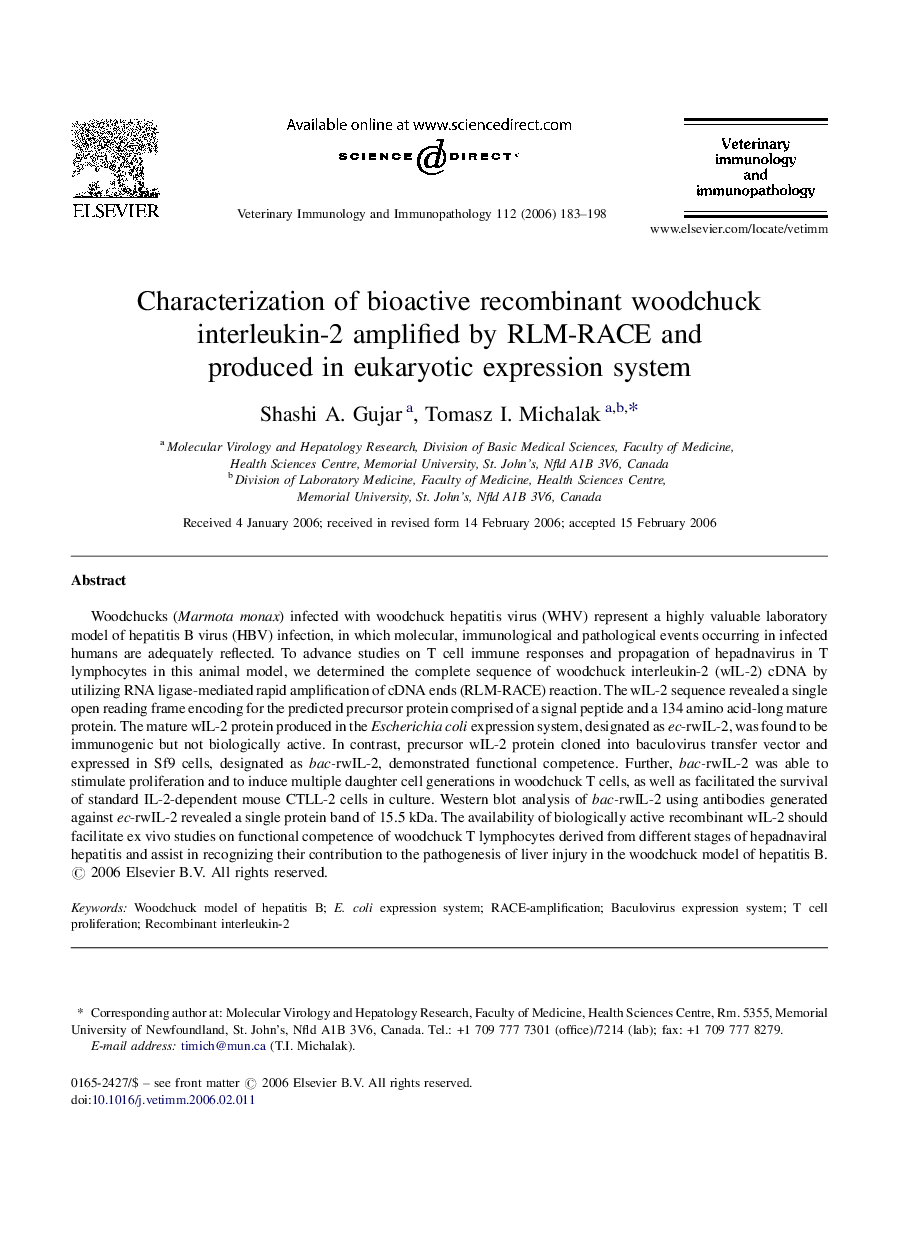| Article ID | Journal | Published Year | Pages | File Type |
|---|---|---|---|---|
| 2463436 | Veterinary Immunology and Immunopathology | 2006 | 16 Pages |
Abstract
Woodchucks (Marmota monax) infected with woodchuck hepatitis virus (WHV) represent a highly valuable laboratory model of hepatitis B virus (HBV) infection, in which molecular, immunological and pathological events occurring in infected humans are adequately reflected. To advance studies on T cell immune responses and propagation of hepadnavirus in T lymphocytes in this animal model, we determined the complete sequence of woodchuck interleukin-2 (wIL-2) cDNA by utilizing RNA ligase-mediated rapid amplification of cDNA ends (RLM-RACE) reaction. The wIL-2 sequence revealed a single open reading frame encoding for the predicted precursor protein comprised of a signal peptide and a 134 amino acid-long mature protein. The mature wIL-2 protein produced in the Escherichia coli expression system, designated as ec-rwIL-2, was found to be immunogenic but not biologically active. In contrast, precursor wIL-2 protein cloned into baculovirus transfer vector and expressed in Sf9 cells, designated as bac-rwIL-2, demonstrated functional competence. Further, bac-rwIL-2 was able to stimulate proliferation and to induce multiple daughter cell generations in woodchuck T cells, as well as facilitated the survival of standard IL-2-dependent mouse CTLL-2 cells in culture. Western blot analysis of bac-rwIL-2 using antibodies generated against ec-rwIL-2 revealed a single protein band of 15.5Â kDa. The availability of biologically active recombinant wIL-2 should facilitate ex vivo studies on functional competence of woodchuck T lymphocytes derived from different stages of hepadnaviral hepatitis and assist in recognizing their contribution to the pathogenesis of liver injury in the woodchuck model of hepatitis B.
Keywords
Related Topics
Life Sciences
Agricultural and Biological Sciences
Animal Science and Zoology
Authors
Shashi A. Gujar, Tomasz I. Michalak,
